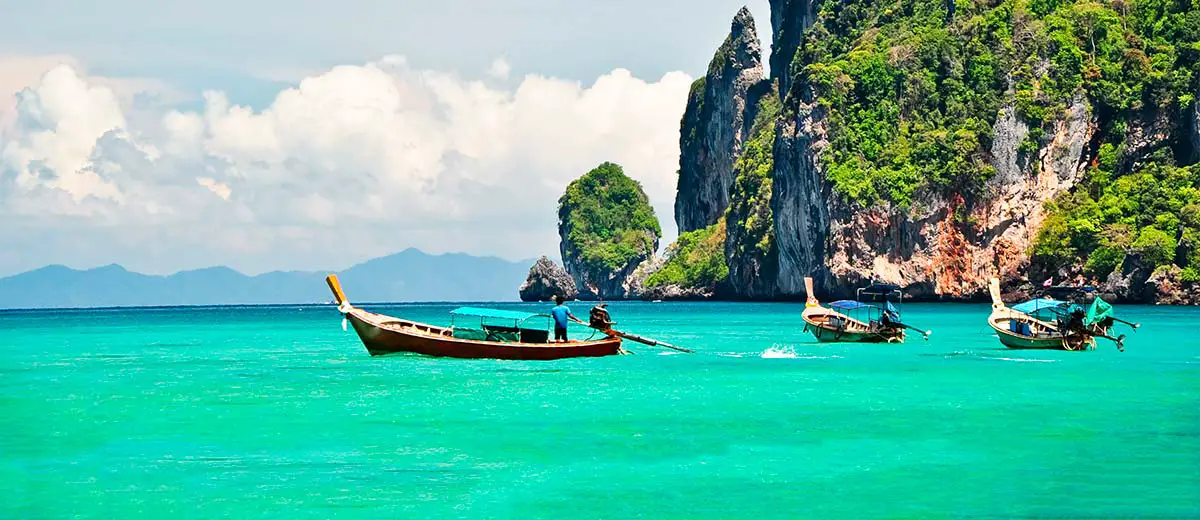Responsible Tourism, What not to do
There’s no denying that Southeast Asia is a place of extreme diversity and natural beauty. In fact, this exact quality helped convince my girlfriend Meridith and I to spend six months travelling the region. We’re now two months into the journey, and so far Southeast Asia has more than met our expectations. We’ve had the opportunity to trek through vibrant jungles, relax on pristine beaches, and dive through lively coral reefs. Experiences like these, along with the generally cheap prices, have helped excel Southeast Asia into the popular travel destination it is today. However, these experiences should by no means be considered permanent.
During our travels, we’ve witnessed countless examples of people disrespecting their natural surroundings. We’ve seen it from locals, both rich and poor, as well as countless travellers. While we realize that some of the problems the ecosystems of Southeast Asia face today are systemic, such as the rampant deforestation and countless Palm oil plantations, there are a number of other, smaller problems that we feel ecotourists can address.

Listed below are five actions ecotourists in Southeast Asia (or really anywhere in the world) should make a point of avoiding. We’ll begin with the most obvious…
Littering
It’s fascinating how people from different parts of the world view littering in completely different lights. We’re both Americans, and back in the United States, litterers are vilified. For a few decades now, there’s been a shift in public opinion against littering, and as a result, a large reduction in the amount of trash in the wild. The same cannot be said of Southeast Asia.
Admittedly, much of the source of litter in Southeast Asia comes from the locals. Because of a combination of differing social standards, lack of education, and lack of public trash cans, many of the locals don’t think twice about leaving trash on the ground. Besides being inherently bad for the environment, this also sets a poor example to tourists. We’ve heard several iterations of the following conversation during the trip:
“What should I do with this beer can? There are no trash cans.”
“Just throw it on the ground, dude, it’s Thailand. There’s already trash there.”
It goes without saying, but responsible ecotourists shouldn’t litter. What’s more, they should make an effort to pick up trash when feasible, or even talk with litterers about the example they set.

Make Poor Souvenir Decisions
This point is particularly a problem in Southeast Asia, but it applies to other regions of the world as well. The souvenir trade revolves primarily around meeting the demands of travellers. In areas without strict regulations and proper enforcement of those regulations, the rush to meet this demand can have unfortunate side effects. For example, here in Asia, one can often purchase “handmade” crafts, which are actually the product of underlaid labour forces.
Another example is clothing. If you know what you’re looking for, it’s not hard to locate well-made, even designer brand labels, for extremely cheap from street vendors. The only way prices can be this low are if the garment is fake, or is a product of a sweatshop. Though this point doesn’t necessarily relate directly to protecting the environment, ecotourists should still be conscious of the history of their goods. It’s wise to be sceptical of deals which seem to be too good to be true.
On a more related note, some products sold by souvenir shops are made from illegal or endangered animal products. For example, here in Asia, it’s relatively easy to get your hands on genuine ivory trinkets. Because of the extremely harmful effects of the ivory trade on elephant populations and their respective ecosystems, ivory trade has been made illegal in most countries. Ecotourists should absolutely avoid purchasing ivory products. What’s more, having ivory in your bag when your return to your home country is bound to bring steep fines.

Neglect Animal Rights
As mentioned in the previous entry, some countries have relatively lax laws in regards to the welfare of animals. This is particularly a problem in Southeast Asia. For example, many of the city zoos and animal farms in Thailand house their animals in conditions that most Westerners could only describe as deplorable. A bit of Internet research ahead of time will help you to avoid such places and spend your money responsibly.
During our time in Thailand, we came across two particularly potent examples of popular attractions that neglect animal rights. The first of these is the Tiger Temple. Travellers in Bangkok and nearby cities have undoubtedly seen porters and advertisements for this extremely popular tourist destination, touting experiences playing with baby tigers and stroking adult tigers. What these ads fail to mention, however, is why an adult tiger would be so anxious to let dozens of human tourists fondle it and its children every day. The frank answer to this conundrum is tranquillizers. As many animal rights group investigations have revealed, these tigers live in a lethargic, drugged existence, where they are too high to bother caring about the tourists or the unnatural living conditions. Note that while the employees of the Tiger Temple likely deny this claim, it’s difficult to imagine any other way a wild tiger would be okay with such a life.

The other example of neglect for the welfare of animals is the elephant farms. Many tourists come to Thailand wishing to ride the elephants, which have come to symbolize the country. Though it’s perfectly acceptable to ride an elephant, travellers should do so under controlled conditions, without using a mount. Fortunately, a handful of ethical elephant centres have been established in Thailand. Do some research to find which elephant centres near your travel destinations treat these gentle animals with the respect they deserve.
Experiencing the Trip through a Camera Lens
So you’ve finally made it out to Asia, done your research, and embarked upon your first eco-quest. It’s only natural that you’ll want to take your camera along, to document the trip for Facebook, Instagram, and for future memories. While I definitely encourage you to take a few photographs, one trap we often see tourists run into is living through the camera lens. Take a few photos, put the camera down, and actually spend time enjoying the moment. I’m definitely personally guilty of wasting amazing moments by experiencing them only through a camera lens. For example, the following image I took during a photoshoot of a lovely sunset, which I spent mostly fiddling with the settings in my camera to get the perfect shot. In doing so, I completely missed the opportunity to see something so amazing firsthand. It all comes down to the last point…

Neglect Your Surroundings
This is perhaps the most important point on this list. An ecotourist should always make a point of being aware of her surroundings. This will help you to notice the beautiful things around you and to avoid inadvertently causing any damage. For example, watch where you step. Don’t step on decaying wood, as it can destroy the habitats of important critters and even pick up the spores of invasive species. In the water, failing to watch where you step (or kick, in the case of swimming) can cause damage to coral reefs.
In general, it’s an ecotourist’s job to make sure they behave responsibly and ethically during their travels. Appropriate research and an awareness for one’s surroundings should be more than enough to act in a reasonably manor, but it’s important to consider the above points and other factors before travelling.

